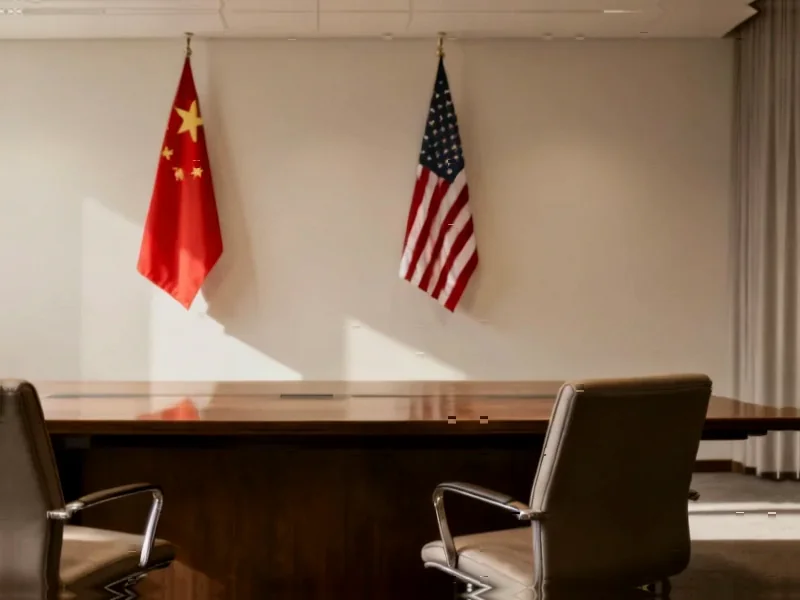According to Forbes, the Supreme Court is hearing two cases this week that challenge President Trump’s unilateral imposition of tariffs using the International Emergency Economic Powers Act of 1977 (IEEPA), despite the Constitution granting Congress exclusive power over taxes and tariffs. The cases involve Trump’s broad tariff applications against China, Mexico, Canada, and nearly every country worldwide, including measures targeting fentanyl components and eliminating de minimis exemptions for small shipments. The petitioners argue that Trump bypassed all 4,732 sections of Title 19 governing customs duties, while the administration claims IEEPA grants unlimited authority to address any declared national emergency. Current estimates show Trump’s tariffs could raise taxes by $2.5 trillion over the next decade, costing households $2,600 annually and already increasing retail prices by 4.9 percentage points. This constitutional showdown could redefine presidential trade powers for generations.
The Supply Chain Shakeout
What the source material doesn’t explore is how these tariff uncertainties are forcing permanent supply chain realignments that will outlast any court decision. Companies that rushed to shift manufacturing from China to Vietnam or Mexico now face the reality that any country could suddenly become tariff-targeted based on presidential discretion. The recent job losses in trade-sensitive sectors represent just the beginning of a broader industrial restructuring. Businesses are increasingly adopting “tariff hedging” strategies—maintaining parallel supply chains across multiple regions despite the inefficiency costs, essentially building redundancy insurance against executive trade actions.
The Small Business Squeeze
While large corporations can absorb tariff costs or shift production, small and medium enterprises face existential threats. The pricing data showing 4.9% retail increases masks the brutal reality for smaller importers: they lack the purchasing power to negotiate better terms with foreign suppliers and can’t easily pass costs to consumers without losing market share to larger competitors. Many are facing the impossible choice of eating margins that were already thin or risking customer loss with price hikes. The Goldman Sachs breakdown showing businesses bearing 51% of tariff costs disproportionately falls on smaller players who can’t leverage global supply chains like multinational corporations.
The Investment Paralysis
Beyond the immediate cost impacts, the broader economic damage comes from investment paralysis. When trade policy becomes unpredictable and subject to unilateral executive action, long-term capital allocation decisions become gambles rather than calculations. Manufacturing expansions, facility investments, and hiring plans are being shelved not because of market conditions but because of policy uncertainty. The Tax Policy Center projections of $2.5 trillion in tariff revenue over a decade represent money that won’t be available for business investment, wage growth, or consumer spending—creating a hidden economic drag that could outweigh the direct revenue collected.
Winners and Losers in the New Trade Reality
The tariff environment is creating unexpected competitive advantages for companies with domestic supply chains insulated from import dependencies, while punishing businesses built on global efficiency models. Domestic manufacturers of steel, aluminum, and basic components are experiencing artificial protection, but downstream manufacturers using those inputs face higher costs. The episode involving Canadian tariffs triggered by a television ad demonstrates how arbitrary the targeting can be, making any import-dependent business model inherently risky. Companies that invested heavily in just-in-time global supply chains are now scrambling to build buffer inventories, increasing working capital requirements and reducing operational efficiency.
The Constitutional Business Framework
Beyond the immediate economic impacts, the Supreme Court’s decision will determine whether businesses operate in a predictable constitutional framework or a system where trade relationships can change overnight by executive fiat. The broader fiscal context shows tariffs representing only about 6% of federal revenue, suggesting the economic disruption outweighs the revenue benefits. If the Court upholds expansive presidential tariff authority, businesses will need to fundamentally reassess their risk models for international trade, potentially accelerating reshoring trends but at the cost of global competitiveness. The outcome will either restore congressional trade authority or establish that any supply chain can become a national security threat at presidential discretion.




